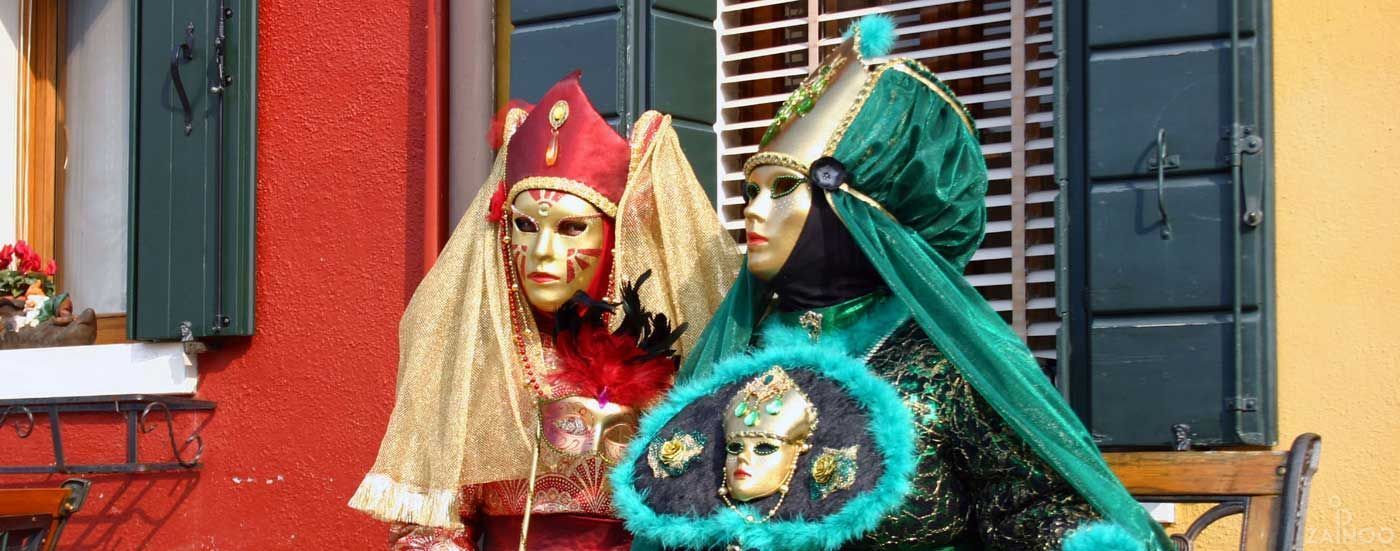Carnival in Venice
Hustle and bustle with tradition
Along with Rio de Janeiro, Venice is undoubtedly the most famous carnival in the world. A week before Shrove Tuesday, Venice turns into one large masked ball. Wherever you go, fools and beautifully costumed mask-wearing people roam the lagoon city – a unique experience for everyone coming to the carnival in Venice. The origin of the hustle and bustle can be traced back to the 15th century when the Doge celebrated the victory over northern Aquileia on Shrove Tuesday for the first time. After the carnival was banned by Napoleon, it was revived in 1979 and has since become an incontrovertible fixture in Venice’s festival calendar.
The roots of the Carnival of Venice
The origins of the Carnival of Venice can be traced back to the early Middle Ages. The first appearance of the term “Carnival of Venice” is in a document by the Doge Vitale Falier in 1094. The Christian term for the carnival (“carne vale” = “a farewell to the flesh”) is a reference to the last night before Shrove Tuesday. However, it is likely that it originally had to do with celebrating the coming of spring. The Carnival of Venice eventually found its current purpose in 1420 when the Doge held the first celebration in honour of the Venetians’ glorious victory over northern Aquileia. In this ceremony a bull and 12 pigs were slaughtered as a symbol of the Aquileian enemy. From then on, this festival was held every year and involved more and more of Venice’s citizens in the festivities and hustle and bustle.
The Carnival of Venice at its peak
The Carnival of Venice quickly became a veritable national festival. The Doges were very shrewd and knew how to make use of the carnival for their own ends. In fact, while the carnival was on, the strict hierarchy of the Doge republic was abolished and every citizen, whether poor or rich, was officially equal. This deceiving equality also contained the right of freedom of expression; street and impromptu theatre like the “Commedia dell’Arte” developed, which, hidden behind masks, depicted yet also criticised public life in a fun way. In addition, jugglers, clowns, quacks, clairvoyants and acrobats played their games – the Carnival of Venice was born. In the 18th century the carnival season lasted up to an incredible six months, and magnificent gondola processions by the nobility were among the carnival’s absolute highlights. But in the meantime things had got out of hand: men like the famous Giacomo Casanova trampled social rules underfoot and the criticism and jokes under the protection of the mask became more blatant and coarse – reason enough for Napoleon to ban the carnival without further ado in 1797.
The rebirth of the Carnival of Venice
In 1979, resourceful Venetian businessmen rediscovered the carnival. Costume and mask manufacturers experienced an unprecedented boom and Venice developed rapidly to become the stronghold of the carnival in Europe. Since then, masses of fools and onlookers have visited Venice every year for the carnival weekend, bringing Venetian public life almost to a standstill. Although those wearing masks are usually no longer Venetians themselves, there are many beautiful masks and costumes which make the carnival worth a visit. Every year, the best masks are awarded prizes, and at St. Mark’s Square there are great events every evening. After a large fireworks display on Shrove Tuesday, the hustle and bustle ends abruptly and Venice returns to normal life.
Despite the crowds and the many visitors, the Carnival of Venice should definitely feature on the itinerary of every traveller to Italy – you must experience it at least once in your life. If you are looking for a hotel in Venice during carnival season, however, you should start your research as soon as possible. The hotels in Venice itself are quickly booked up and affordable apartments can only be found on the islands and in the surrounding area.



Tweet